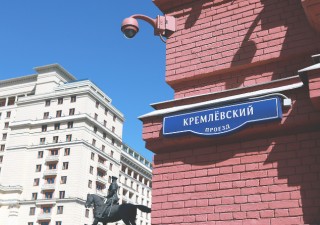What does an applicant need to do before a successful trademark registration in Russia?
31 May 2024

The procedure for registering a trademark in Russia begins with Rospatent. After filing, the application goes through the stages of formal examination and examination of the declared designation.
According to Article 1498 of the Civil Code, formal examination of a trademark application is carried out within a month from the date of its submission. During the process, the presence of the necessary application documents and their compliance with the established requirements are checked. Based on the results of the formal examination, the application is accepted for consideration or a decision to refuse to accept it for consideration is made. Rospatent shall notify the applicant of the results of the formal examination. Simultaneously with the notification, the applicant is informed of the date of filing the application. After completion of the formal examination, the examination of the claimed designation begins. Based on the results, Rospatent makes a decision on the state registration of the trademark or on refusal to register it.
Examination of the claimed designation is the most important stage of the registration procedure, when Rospatent expert checks the application for the presence or absence of absolute and/or relative grounds for refusing to register a trademark. These grounds are set out in Article 1483 of the Civil Code of the Russian Federation. Based on the results, Rospatent issues either a decision on registration or a notification.
Making a decision on registration means a positive decision. In this case, the final stage of the registration procedure remains – payment of the registration fee, registration of the mark and issuance of a certificate. Currently, the certificate can be obtained in electronic or paper form, both types of certificate have the same legal force. At the same time, the fee for issuing a paper certificate is more by 2,000 rubles (US$22) more than an electronic certificate (subject to payment of the duty online of 1,400 rubles).
The issuance of a notice on the application means the existence of obstacles to the registration of the trademark. The deadline for responding to a notification is six months from the date of its issuance. During this period, the applicant may take steps to overcome the examiner’s arguments. Possible options for action may be: responses to notifications with arguments about the dissimilarity or heterogeneity of goods or services; negotiating the receipt of letters of consent from the owners of opposed signs; and amendments to the declared list. However, the decision to accept or reject the arguments given in the answer is at the discretion of the examiner.
In order for the registration of a trademark to be carried out with the least risks, a number of actions must be carried out before filing an application, which will be discussed below.
First of all, it is necessary to decide on the designation that is planned for further registration. At the same time, we always recommend registering the mark in the form in which it is planned to be used or is used in the implementation of the applicant’s activities. The reason is that after three years from the date of trademark registration, an interested third party who believes that the right holder does not use the trademark in relation to all or part of the goods or services has the right to try ahead of schedule cancel the trademark due to its non-use. In this case, the right holder must provide evidence of the use of the mark. The sufficiency and acceptance of evidence is determined by the IP Court.
The next step is to determine the type of mark. A sign can be:
- Verbal: The designation contains only a word or phrase in a standard font in black and white;
- Figurative: The designation contains only a graphic part without any verbal elements and can be in colour or black and white;
- Combined: The designation includes verbal and figurative elements in any colour combination.
Verbal, figurative and combined types of marks are the most popular among applicants. Less common are sound, volumetric, positional, taste and other types of trademarks.
When the designation for registration and its type are determined, it is necessary to select the classes of the Nice Classification. Nice represents 45 classes: Classes 01 to 34 are commodities, while Classes 35 to 45 are service classes. The amount of fees paid to Rospatent depends on the number of selected classes. We note that after registration, the right holder is obliged to use the mark. If the mark is not used for a part of the goods or services, then the person concerned may subsequently try to cancel it through the court.
After agreeing on the classes, we always recommend that our clients to conduct a search for the classes of interest to the Nice Classification to assess the chances of registration. We conduct two types of searches: verbal and pictorial. If the designation is multicomponent, i.e. contains unrelated verbal elements or several separate figurative elements, we may recommend conducting more than one verbal/figurative search in order to check each element individually and understand the practice of registering such elements. As part of the search, we check the designation for the presence or absence of absolute and relative grounds for refusing to register a trademark and check information about the designation on the internet. Based on the results of the search, we send a report that contains all the information identified and possible options for action in case of possible obstacles to trademark registration. If significant risks have been identified as a result of the search, the client may modify the designation to avoid resemblance to identified earlier marks or applications.
Conducting a search before filing an application helps save money, including the Rospatent fee, spent at the stage of filing an application. Registering trademarks is becoming more difficult as the number of trademarks and applications grows.
Immediately before submitting the application, you must select the person who will be the applicant. At the moment, the applicant may indicate a Russian individual, individual entrepreneur or legal entity, as well as a foreign legal entity or individual.
At the same time, effective work with the designation until the moment of filing an application in order to reduce the possible risks of refusal in registration is the result of interaction between the client and the patent attorney, since achieving the result (registration of a trademark) is our common goal.








